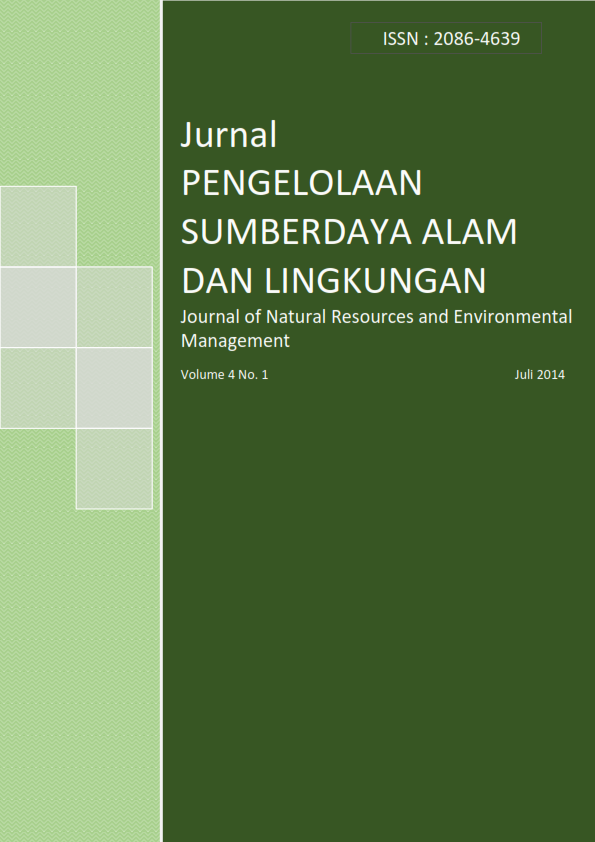STRATEGI PENGELOLAAN SUNGAI CIBANTEN PROVINSI BANTEN BERDASARKAN ANALISIS DAYA TAMPUNG BEBAN PENCEMARAN AIR DAN KAPASITAS ASIMILASI
Abstract
Cibanten river is one of the most potential to be developed as a source of raw water. Crucial issues at Cibanten river is the increasing load of water pollution as indicated by parameter BOD, COD and TSS. This study aimed to estimate the amount of Total Maximum Daily Load (TMDL) in Cibanten river, analyze the quality Status of the Cibanten river water, analyze the capacity of assimilation, and determine management strategy of Cibanten river of Banten Province. TMDL of BOD were determined by modeling Qual2KW and the results were compared with the second class water quality standards to regulation No. 82/2001. Management strategy of Cibanten river determined by analysis of the results of an expert survey method with AHP (Analytical Hierarchy Process). Quality Status of the Cibanten river water with pollution index was light raiment and storet method of Raw Water Quality class II belong was heavy raiment. Results of the simulation calculation of TMDL, the total load of pollution in the Cibanten BOD was730 tons/month while the TMDL of BOD was 146.801 tons/month. Results of the analysis of assimilation capacity COD was 24208 tons/month. Results of the analysis methods of survey expert with AHP (Analytical Hierarchy Process) is monitoring and surveillance as an alternative management strategies with the highest priority of the Cibanten river (agregate value 0.202) and following up the monitoring results.
Keywords: Cibanten River, total maximum daily loads, Qual2Kw, assimilation capacity, storet, pollution index, Analytical Hierarchy Process
Authors
Authors who publish with this journal agree to the following terms:
- Authors retain copyright and grant the journal right of first publication with the work simultaneously licensed under a Creative Commons Attribution License that allows others to share the work with an acknowledgement of the work's authorship and initial publication in this journal.
- Authors are able to enter into separate, additional contractual arrangements for the non-exclusive distribution of the journal's published version of the work (e.g., post it to an institutional repository or publish it in a book), with an acknowledgement of its initial publication in this journal.
- Authors are permitted and encouraged to post their work online (e.g., in institutional repositories or on their website) prior to and during the submission process, as it can lead to productive exchanges, as well as earlier and greater citation of published work (See The Effect of Open Access).






